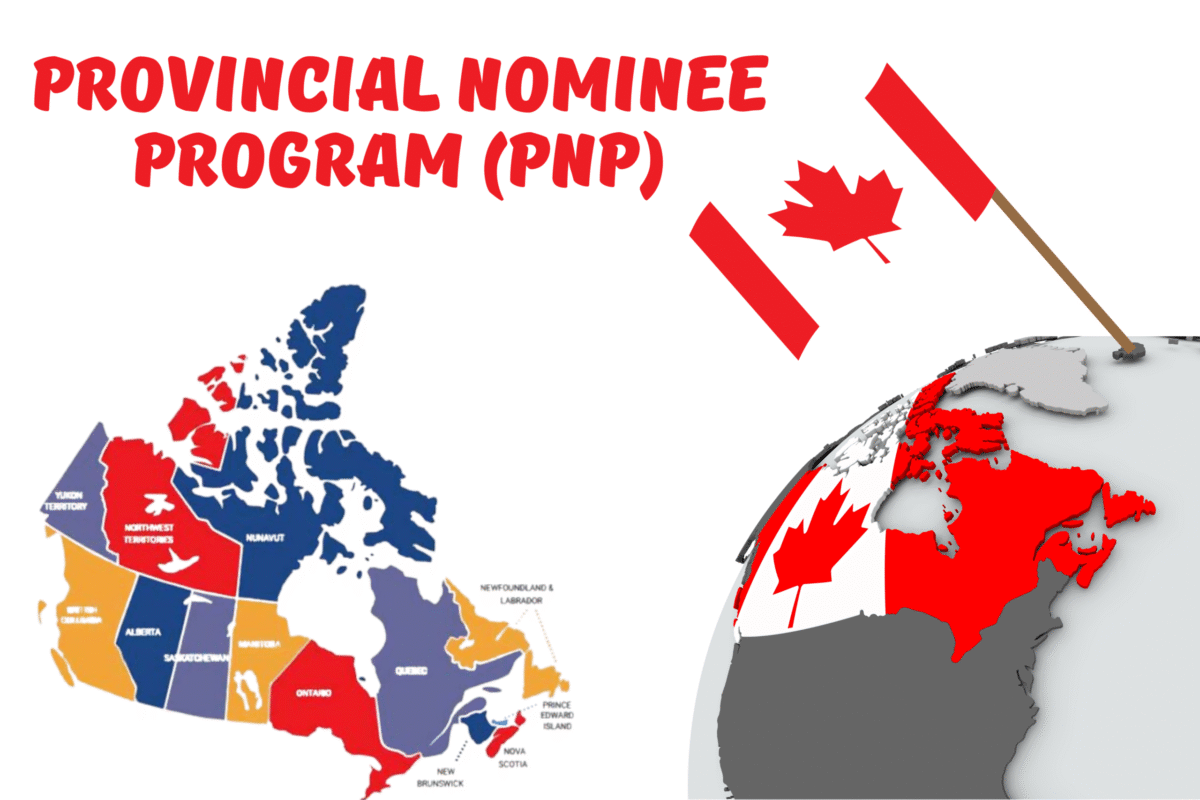
On May 12, 2025, the Minister of Citizenship and Immigration, Rachel Bendayan, issued Ministerial Instructions 346, detailing the latest round of invitations to apply (ITAs) for permanent residence under Canada’s Express Entry system. This round specifically targeted candidates in the Provincial Nominee Program (PNP), a vital pathway for skilled workers nominated by Canadian provinces or territories. Below, we provide a comprehensive overview of the draw, its implications, and how it fits into Canada’s border immigration strategy under the new Ministry led by Prime Minister Mark Carney.
Key Details of the Express Entry Round – May 12, 2025
The Express Entry draw, conducted on May 12, 2025, at 14:14:40 UTC, issued 511 invitations to apply to eligible foreign nationals in the Provincial Nominee Program. Here are the essential details:
-
Program: Provincial Nominee Program (PNP)
-
Number of Invitations Issued: 511
-
Rank Required to Be Invited: 511 or above
-
CRS Score of Lowest-Ranked Candidate Invited: 706
-
Tie-Breaking Rule: March 4, 2025, at 22:35:42 UTC
-
Date and Time of Round: May 12, 2025, at 14:14:40 UTC
-
Period for Issuing Invitations: May 12, 2025, to May 13, 2025
The Comprehensive Ranking System (CRS) score cutoff of 706 reflects the high competitiveness of PNP draws, largely due to the additional 600 CRS points awarded to candidates with a provincial nomination. The tie-breaking rule, applied when multiple candidates share the lowest score, prioritized those who submitted their Express Entry profiles before March 4, 2025, at 22:35:42 UTC.
Understanding the Provincial Nominee Program (PNP)
The Provincial Nominee Program allows Canadian provinces and territories to nominate skilled workers who meet their specific labor market and economic needs. PNP candidates in the Express Entry system are awarded an additional 600 CRS points upon receiving a nomination, significantly boosting their chances of receiving an ITA. This makes PNP draws particularly attractive for candidates who may not otherwise achieve high CRS scores through factors like age, education, or language proficiency.
Eligible foreign nationals in this round are those with an active expression of interest (EOI) in the Express Entry pool, as defined by the Ministerial Instructions Respecting the Express Entry System (published in the Canada Gazette, Part I, on December 1, 2014, and amended periodically). Candidates must also meet the eligibility criteria for the PNP class outlined in subsection 2(d) of the Express Entry Instructions.
Ministerial Instructions 346: Breaking Down the Details
Issued under the Immigration and Refugee Protection Act, Ministerial Instructions #346 provide the legal framework for this PNP draw. Key components include:
-
Grouping of Candidates:
-
A specific grouping was established for ranking purposes, consisting of eligible foreign nationals who qualify for the PNP, as per subsection 2(d) of the Express Entry Instructions.
-
Candidates are ranked within this group based on their CRS scores, which consider factors such as education, work experience, language skills, and the additional points from a provincial nomination.
-
-
Number of Invitations:
-
A total of 511 ITAs were issued to the top 511 ranked candidates in the PNP grouping.
-
-
Period of Invitations:
-
Invitations were valid from May 12, 2025, to May 13, 2025, providing a one-day window for Immigration, Refugees and Citizenship Canada (IRCC) to issue ITAs.
-
-
Definitions:
-
Terms like “eligible foreign national” (those with an active EOI), “group ranking” (ranking within the PNP grouping), and “invitation” (as defined in the Express Entry Instructions) ensure clarity and consistency in the process.
-
These instructions align with Canada’s transparent and structured approach to managing economic immigration.
Why This Round Stands Out – Ministerial Instructions 346
The CRS cutoff of 706 is notably high, even for a PNP draw, where candidates typically benefit from the 600-point nomination boost. This suggests that the base CRS scores of invited candidates (before the nomination) were at least 106, indicating a pool of highly qualified individuals. Several factors contribute to this:
-
Provincial Nomination Impact: The 600-point boost for PNP candidates elevates their CRS scores, making PNP draws inherently high-scoring compared to other streams like the Canadian Experience Class (CEC).
-
Competitive Pool: As of May 13, 2025, the Express Entry pool contained 250,082 candidates, with significant competition driven by temporary residents eligible for PNP and CEC programs.
-
Economic Priorities: The PNP aligns with Canada’s goal of addressing regional labor shortages and supporting provincial economies, as emphasized by the new Ministry’s focus on building a strong, united economy.
This draw follows closely on the heels of Ministerial Instructions 347 (May 13, 2025), which issued 500 ITAs to CEC candidates with a CRS cut off of 547. The contrast in CRS scores between the PNP and CEC draws highlights the distinct role of provincial nominations in fast-tracking permanent residence for regionally prioritized candidates.
Contextualizing the Draw: Canada’s Immigration Strategy
This PNP draw occurs under the leadership of Prime Minister Mark Carney’s newly announced Ministry, with Lena Metlege Diab as the Minister of Immigration, Refugees and Citizenship. The government’s mandate emphasizes economic growth, affordability, and nation-building, with immigration playing a pivotal role. The PNP is a key tool for achieving these goals by directing skilled workers to provinces and territories with specific labor market needs, thereby supporting regional development and economic unity.
The high CRS cut off also reflects recent changes to the Express Entry system. As of March 25, 2025, IRCC removed points for job offers (previously worth 50 or 200 CRS points), making provincial nominations even more critical for candidates seeking to boost their scores. This policy shift underscores the government’s focus on aligning immigration with long-term economic priorities rather than short-term job offers.
According to the 2025-2027 Immigration Levels Plan, Canada aims to welcome 124,680 new permanent residents through Express Entry in 2025. With 29,850 ITAs issued so far in 2025 (including this draw), IRCC is on track to meet its targets, balancing general, program-specific, and category-based draws to address diverse economic goals.
What’s Next for Invited Candidates?
Candidates who received an ITA in this round have 60 days to submit a complete permanent residence application to IRCC, including documents like proof of education, work experience, language test results, and a provincial nomination certificate. Given the high stakes of PNP applications, candidates should ensure their submissions are accurate and comprehensive to avoid delays or refusals.
For candidates who did not receive an ITA, the Express Entry system offers ongoing opportunities through regular draws, typically held every two weeks. To improve their chances in future PNP draws, candidates can:
-
Pursue a Provincial Nomination: Contact provincial immigration offices to explore nomination streams, which vary by region and may target specific occupations or skills.
-
Enhance CRS Scores: Improve language test scores (e.g., IELTS or CELPIP), gain additional work experience, or complete further education to increase base CRS points.
-
Monitor Draw Trends: Stay informed about CRS cutoffs and program-specific draws via IRCC’s official website or trusted immigration news sources.
Implications for Aspiring Permanent Residents
The high CRS cut off of 706 underscores the competitive nature of PNP draws, particularly for candidates relying on provincial nominations to secure ITAs. For those with lower base CRS scores, the PNP remains one of the most effective pathways to permanent residence, as the 600-point boost can overcome gaps in other areas like age or language proficiency. However, recent changes to PNP allocations—such as reduced nomination spots and tightened eligibility criteria in some provinces—mean candidates must be strategic in targeting streams that align with their profiles. Ministerial Instructions 346
Aspiring applicants should also note the role of category-based draws, which prioritize candidates with skills in areas like healthcare, STEM, trades, or French-language proficiency. While this draw was program-specific (PNP), future draws may target these categories, offering alternative pathways for those who don’t qualify for provincial nominations.
Tips for Success in Express Entry
To maximize your chances of receiving an ITA in future draws:
-
Research PNP Streams: Each province has unique streams (e.g., British Columbia’s Skills Immigration or Ontario’s Human Capital Priorities). Review eligibility criteria and apply to those best suited to your profile.
-
Optimize Your CRS Score: Focus on improving language scores, securing educational credential assessments, or gaining additional skilled work experience.
-
Stay Updated: Regularly check IRCC’s Express Entry rounds page and the Canada Gazette for Ministerial Instructions.
-
Seek Professional Guidance: Consult a licensed immigration consultant or lawyer to navigate complex PNP requirements and ensure compliance with IRCC standards.
Conclusion
Ministerial Instructions 346, issued on May 12, 2025, reflect Canada’s strategic use of the Provincial Nominee Program to address regional economic needs and support national growth. With 511 ITAs issued at a CRS cutoff of 706, this draw highlights the critical role of provincial nominations in the Express Entry system and the competitive nature of Canada’s immigration landscape.
As the new Ministry under Prime Minister Mark Carney works to build a stronger, united economy, the PNP will remain a cornerstone of Canada’s immigration strategy, directing skilled talent to where it’s needed most. Candidates in the Express Entry pool should leverage this opportunity to pursue nominations, enhance their profiles, and stay prepared for future draws.
For more details, visit the official IRCC Express Entry rounds page or consult the Canada Gazette for the full text of Ministerial Instructions.
